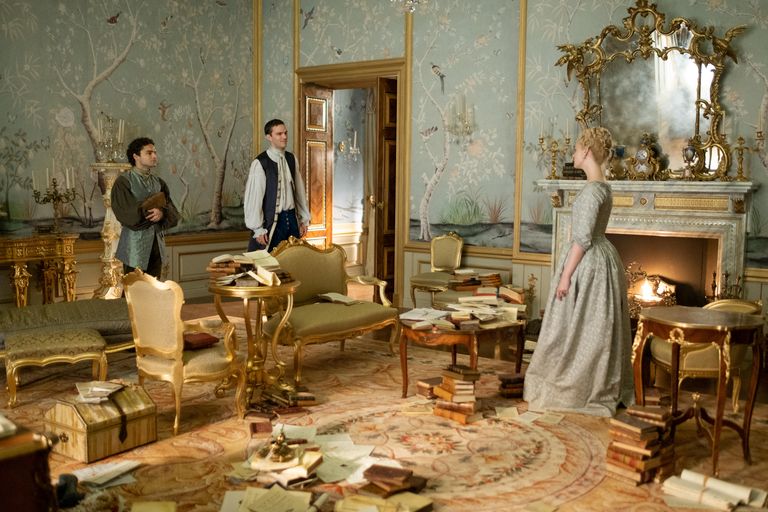When we think of Catherine the great furniture, the celebrated Empress of Russia who reigned from 1762 to 1796, we often remember her as a reformer, a patron of the arts, and one of the most powerful monarchs in European history. But beyond her political genius and cultural influence, Catherine’s reign also left behind an extraordinary artistic legacy — particularly in the world of furniture and interior design.
Catherine the Great’s furniture reflects not only the grandeur of 18th-century imperial Russia but also the Empress’s passion for art, sophistication, and European craftsmanship. Each piece commissioned under her rule was designed to reflect her power, intelligence, and vision of a modern empire rooted in enlightenment and elegance.
The Historical Background: Russia’s Cultural Transformation
When Catherine ascended the throne in 1762, Russia was undergoing a period of rapid cultural transformation. She was deeply inspired by European art and architecture, particularly the styles of France and Italy. Eager to align Russia with Western Europe’s cultural sophistication, Catherine turned her attention to palace design and interior decoration.
Under her patronage, furniture became more than functional — it became a symbol of imperial prestige. The Empress understood the power of art in shaping national identity. By embracing European aesthetics, she not only showcased Russia’s modernization but also asserted her position as a ruler equal to other European monarchs.
The Influence of European Art and Design
Catherine’s taste was profoundly influenced by the French Rococo and Neoclassical movements that were popular in 18th-century Europe. She admired the works of French kings, especially Louis XV and Louis XVI, whose furniture makers set the gold standard for elegance and craftsmanship.
However, Catherine’s version of luxury was distinctively Russian — grander, bolder, and infused with a sense of imperial majesty. She imported European artisans, commissioned local craftsmen, and established workshops in St. Petersburg to produce world-class furniture.
These workshops combined European design principles with Russian materials such as birch, walnut, and mahogany, as well as decorative elements inspired by Russian folklore and Orthodox Christian motifs. The result was a unique fusion of styles — refined yet powerful, elegant yet unmistakably Russian.
The Palaces: Living Museums of Luxury
Catherine’s reign saw the construction and decoration of some of Russia’s most iconic palaces — The Winter Palace, Tsarskoye Selo (Catherine Palace), and Pavlovsk Palace, among others. Each residence became a stage for her artistic ambitions, filled with exquisite furniture and art pieces that rivaled those of Versailles or Schönbrunn.
The Winter Palace
The Winter Palace in St. Petersburg served as the official residence of the Russian monarchs and was the centerpiece of Catherine’s decorative vision. Inside, visitors were greeted by grand halls, gilded walls, and furniture adorned with gold leaf, marquetry, and intricate carvings.
Chairs and tables often featured neoclassical motifs, such as laurel wreaths, garlands, and fluted legs — reflecting her admiration for ancient Greek and Roman design. Upholstery was typically made of silk and velvet, with deep colors like royal blue, emerald green, and crimson symbolizing imperial authority.
Catherine Palace
Located in Tsarskoye Selo, the Catherine Palace is one of the most magnificent examples of Rococo architecture in Russia. The interiors were filled with ornate furniture, mirrored walls, and golden stucco decorations.
One of the most famous rooms — the Amber Room — exemplifies the extravagance of her taste. Though originally created for Peter the Great, Catherine expanded and refurbished it with incredible attention to detail, surrounding it with complementary furniture pieces that enhanced its luminous amber glow.
Pavlovsk Palace
This palace, designed for her son Paul I, reflects the transition from Rococo to Neoclassicism. Furniture from this period featured more geometric forms, restrained decoration, and natural wood tones — a clear sign of Catherine’s evolving artistic taste.
Key Features of Catherine the Great’s Furniture
Catherine’s furniture was characterize by a perfect balance between opulence and refinement. Below are the key design elements that define her style:
a. Use of Precious Materials
The Empress spared no expense when it came to materials. Gold, silver, marble, and fine woods were often used to craft her furniture. Gilded bronze mounts, mother-of-pearl inlays, and ivory accents were common, reflecting the lavish tastes of the royal court.
b. Artistic Carvings and Ornamentation
Furniture during Catherine’s reign often featured hand-carved decorations depicting flowers, cherubs, mythological scenes, and imperial symbols such as the double-headed eagle. The level of craftsmanship demonstrated by these carvings was extraordinary, reflecting both Russian skill and European artistry.
c. Integration with Architecture
Catherine’s designers didn’t treat furniture as separate from architecture. Every chair, table, and cabinet was carefully match to the walls, ceilings, and floors of the room. This created a harmonious aesthetic that was both grand and cohesive.
d. The Rise of Neoclassicism
As the Rococo style began to fade in Europe, Catherine embraced the Neoclassical movement. Her furniture began featuring cleaner lines, symmetrical shapes, and motifs inspired by ancient Greece and Rome — such as columns, urns, and acanthus leaves. This gave her interiors a timeless, intellectual charm.
The Role of Artisans and Workshops
Catherine’s passion for design inspired the establishment of imperial workshops and foreign collaborations. She invited master craftsmen from France, Germany, and England to work alongside Russian artisans. Training them in European methods of furniture-making.
One of the most famous workshops of the era was that of David Roentgen. A German cabinetmaker whose mechanical furniture fascinated the Empress. Roentgen created several extraordinary pieces for Catherine, including writing desks with hidden compartments and automatic mechanisms — innovations far ahead of their time.
By investing in these collaborations, Catherine not only elevated Russian craftsmanship. But also positioned her empire as a global center of luxury and innovation.
Symbolism and Power in Design
Catherine understood that furniture was a political tool. Every throne, table, and mirror in her palaces was design to convey messages of strength, intelligence, and legitimacy.
Her furniture symbolized control over nature and beauty, much like her reign symbolized control over her vast empire. The Neoclassical motifs reinforced her image as an enlightened ruler guided by logic, art, and philosophy — values at the core of the Enlightenment era.
Even the arrangement of furniture in her private chambers was deliberate. Rooms were design for intellectual gatherings, discussions about science and art, and displays of her growing art collection — all meant to project the image of a culture, wise monarch.
The Legacy of Catherine the Great’s Furniture
Today, Catherine the Great’s furniture is rever by historians, art collectors, and designers around the world. Many of her original pieces are preserve in Russian museums such as The Hermitage Museum in St. Petersburg, allowing visitors to glimpse the opulence of her court and her impeccable taste.
Her influence also lives on in modern interior design. Contemporary designers still draw inspiration from her elegant Neoclassical motifs, lavish ornamentation, and commitment to harmony and balance. The combination of art and power that defined her aesthetic continues to shape luxury furniture trends today.
Conclusion: A Queen of Art and Ambition
Catherine the Great’s furniture represents far more than mere decoration. It is a manifestation of her vision, her intellect, and her relentless pursuit of cultural greatness. Through her love of design, she not only transformed the artistic landscape of Russia. But also created a visual legacy that continues to inspire the world centuries later.
Every chair, table, and cabinet from her era tells a story — of ambition, enlightenment, and the timeless allure of beauty. In blending European refinement with Russian grandeur. Catherine the Great crafted a style that, much like her reign, remains majestic, influential, and eternal.

